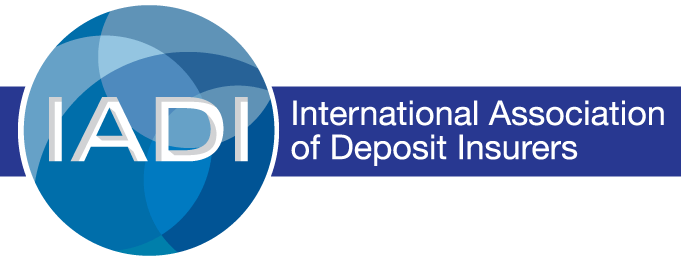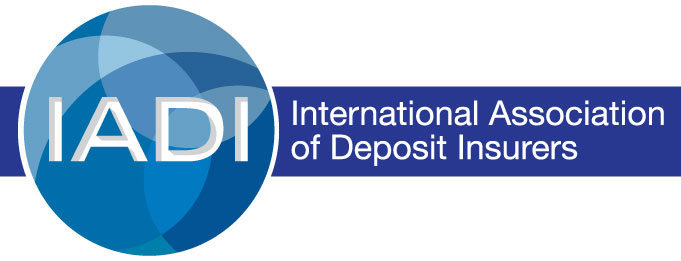Chinese Taipei, 25 April 2024
Alejandro López
Good morning, everyone. I am very pleased to talk to you today. Unfortunately, I cannot be with all of you in Taipei today. This is really a pity, as I have visited the country in the past and hold very fond memories. So, I apologise for speaking to you virtually today. But at least on this occasion, the 11 hours time difference between Taipei and Buenos Aires has a benefit and I can speak to you during my evening here.
Chinese Taipei and indeed the whole Asia Pacific Region has a long history of commitment to research and policy making within the IADI community. Taipei is therefore the perfect location to explore some of our latest developments in this space. This will allow us to focus on the ambitious, yet rewarding road we have lying ahead of us in IADI, in guaranteeing that deposit insurance systems remain future-proof.
Allow me to start by thanking the Central Deposit Insurance Corporation for hosting this event. Even though I cannot personally testify, knowing the CDIC colleagues, I am absolutely sure everything has been organised perfectly. Thank you very much for your efforts and dedication. In particular, I would like to thank William Su and Yvonne Fan. Their continued commitment to the IADI vision and mandate is tremendous and should not be understated. I also would like to thank the Asia Pacific Regional Committee Chair Hidenori Mitsui from the Deposit Insurance Corporation of Japan. Thank you for your leadership and foresight in fostering crucial dialogue within the region.
If you allow me, in the next couple of minutes, I would like to share some thoughts with you that fit well to the theme of this Conference and to the strategic challenges that our Association is faced with.
Almost on the day one year ago, First Republic Bank in the US failed and added another chapter to what is often – somewhat euphemistically – called the “2023 banking turmoil”. I will come back to this and explain my choice of words in a minute.
For sure, this was quite a shock and since then, supervisors, regulators, resolution authorities, central banks, and standard-setters – including IADI – have studied the events and their potential implications in a large number of reports, studies and publications. As I am sure you are aware, IADI has published its lessons learnt report in December 2023, in which we identified four key issues and challenges that merit further analysis by IADI. These include deposit insurance design, the interplay of deposit insurance and resolution, coordination in the financial safety-net and digitalisation. I am grateful that all these topics are present on the agenda of today’s conference; and I am confident that today’s discussions will help us in further understanding options and opportunities for us to go forward.
As you may know, IADI has now initiated the review of its Core Principles for Effective Deposit Insurance Systems. Our EXCO has approved the establishment of a High-Level Steering Committee, chaired by Leah Anderson, President and CEO of CDIC Canada, which will give guidance on how the Core Principles need to be reviewed. Just some days ago, this Committee has met for the first time and has confirmed that it will conduct focused and targeted work on addressing gaps in the CPs to protect depositors and promote financial stability that are evident as a result of lessons learned from the banking turmoil in 2023.
The areas of priority will include coverage, reimbursement, resolution, and financial safety net co-ordination. Specific topics of discussion will include scenarios of differentiated coverage; accounting for uninsured deposits; the relevance of differential premium systems; access to deposits; and the role of least or less cost test and systemic exemptions in determining the allowable use of deposit insurer funds. In addition, we identified the need for more intensified coordination within the financial safety net, and this includes the importance of crisis preparedness and the power by deposit insurers to access data, e.g. on deposit flows. I feel a case can be made that these powers tend to be rather limited.
In the next couple of weeks and months, our members will discuss intensively. Our aim is to initiate a public consultation on the updated core principles by the end of the year.
Now let me come back to the “2023 banking turmoil”. Peculiar and case specific as the failing banks may have been, they all had in common that their failing was digital. Digital means fast. Comparable to my voice travelling across the world from Argentina to you in Taipei in a split second, deposits can increasingly be withdrawn at incredible speeds an in large amounts at nearly the same time. In addition to digital payment technology, social media may even increase the risks of this occurring. This confronts us, deposit insurers and resolution authorities, with significant challenges. How can we prepare for this, how can we maybe even anticipate such events through monitoring activities? As deposit insurers, are we making sufficient use of digital technology in this respect? Do we have the capabilities to intervene swiftly and on short notice if such events take place? Which resolution tools do our financial safety-nets have in place that are practically useable – and effective – on such short notice and what is our role as deposit insurers in these resolution proceedings? These are urgent, but very complex questions and I believe we need to take these very seriously.
Not doing so may expose us to the risk of being confronted with a situation of rapidly declining public trust in the financial system and in the financial safety-net. This is a scenario we all seek to avoid as losing trust can happen very quickly, but rebuilding such trust can take much longer. In this fast-paced digital era, people have grown accustomed to a high speed of service delivery. That is valid most prominently also for the financial sector, and as a result, the expectations of the sector’s customers - and that includes depositors – may increasingly become more ambitious, even when regional and cultural characteristics may differ.
Deposit insurers should investigate such trends and if confirmed, take them seriously. This should motivate us to consider whether we are doing enough to satisfy such expectations, especially in cases where they may be relevant to depositor protection and financial stability. If waiting seven days (and in reality, often more) for reimbursement of deposits were perceived in some cases as too long in a vibrant digital world, which alternatives could be considered, that may bring us closer to the aim of facilitating uninterrupted access to deposits; at least to part of deposits? There are a number of avenues for this, they may include increased use of digital innovation in speeding up reimbursement, but they may also be found in the field on non-payout bank failure management measures. I believe these options deserve serious consideration.
On a more fundamental note, we should be aware that the tremendous innovation power of digitalisation has the potential to alter existing value chains in many economic industries, including the financial sector. Innovation may lead to new actors entering the markets and data-driven network effects may allow these actors to gain considerable market shares very quickly. Indeed, when compared to other economic sectors, in the financial sector, the extraordinary relevance of regulation may well act as a restraint to such sudden disruptions. Nevertheless, it would be very unwise to underestimate the potential as well as the risks of digital innovation to the banking sector more generally. Important as regulation is and will remain, the very speed of innovation will likely lead to significant regulatory arbitrage. Also, grey-zones seem unavoidable, as regulation cannot necessarily provide clarity to all products and services in a fast-changing market. There may also be regulatory gaps, where regulation is still to catch up with market evolutions. All this may affect us as deposit insurers, and we should remain vigilant to such risks.
Just recently, the BIS’ Agustin Carstens has presented the concept of what he calls “the Finternet” as a vision for a future, digitally intertwined financial system. Carstens presents this as a network of interoperable financial ecosystems, with significant relevance for tokenised assets, and for common platforms that would allow for their interoperability and hence offer additional added value.
Tokenised deposits may be a very relevant example of such tokenised assets. As such, these deposits could be programmable, and their transfers could be made contingent on certain conditions. It does not need too much imagination to understand that this may give rise to the creation of new financial products that may very profoundly impact on banks’ liquidity management and the demand for bank deposits.
Again, let’s not underestimate the role of regulation and international standard-setting. Innovative products and services are most useful when backed by a robust governance and regulatory framework that safeguards financial stability, while allowing for innovation. This future regulatory framework will be decisive for the future role of intermediaries, such as private banks; but also for the treatment of tokenised commercial bank deposits; and the design of potential future central bank digital currencies.
The regulation and supervision of both private and public digital currencies is a topic of fundamental interest to the international community of deposit insurers. Questions of high relevance include those on how tokenised bank deposits should be treated by deposit insurance, what their impact on the stickiness of deposits may be and how default-proof Central Bank Digital Currencies relate to commercial bank deposits, whose default risks are – within limits – covered by deposit insurance. Again, these are complex issues that require significant preparation and analysis by our Association and its members in advance of policy decision; and I welcome that work in IADI’s Analysis and Policy Committees is reflecting this.
Let me close here and allow me to come back to the Review of the IADI Core Principles, which I mention at the outset. I view this review as an occasion to enhance the IADI reputation as a global standard setting body. We are open to paving our own path that focusses on strengthening deposit insurance systems around the world and reinforcing their capacity to deliver on their objectives – protecting depositors and contributing to financial stability; but in the world as we know it today, and in the future, more digital world.
I am confident that the discussions at this conference will be an important input to this work, and I wish you an insightful and though-provoking day.
Let me thank you sincerely for your attention today. I wish you all an enjoyable conference.
Thank you.
References
BIS Working Papers No 1178, Finternet: the financial system for the future, by Agustín Carstens and Nandan Nilekani, April 2024
IADI. (2014). IADI Core Principles for Effective Deposit Insurance Systems. International Association of Deposit Insurers, 2014.
IADI. (2023). The 2023 banking turmoil and deposit insurance systems: Potential implications and emerging policy issues. International Association of Deposit Insurers, December 2023.
IADI. (2024). Deposit Insurance in 2024: Global Trends and Key Issues. International Association of Deposit Insurers, April 2024.

